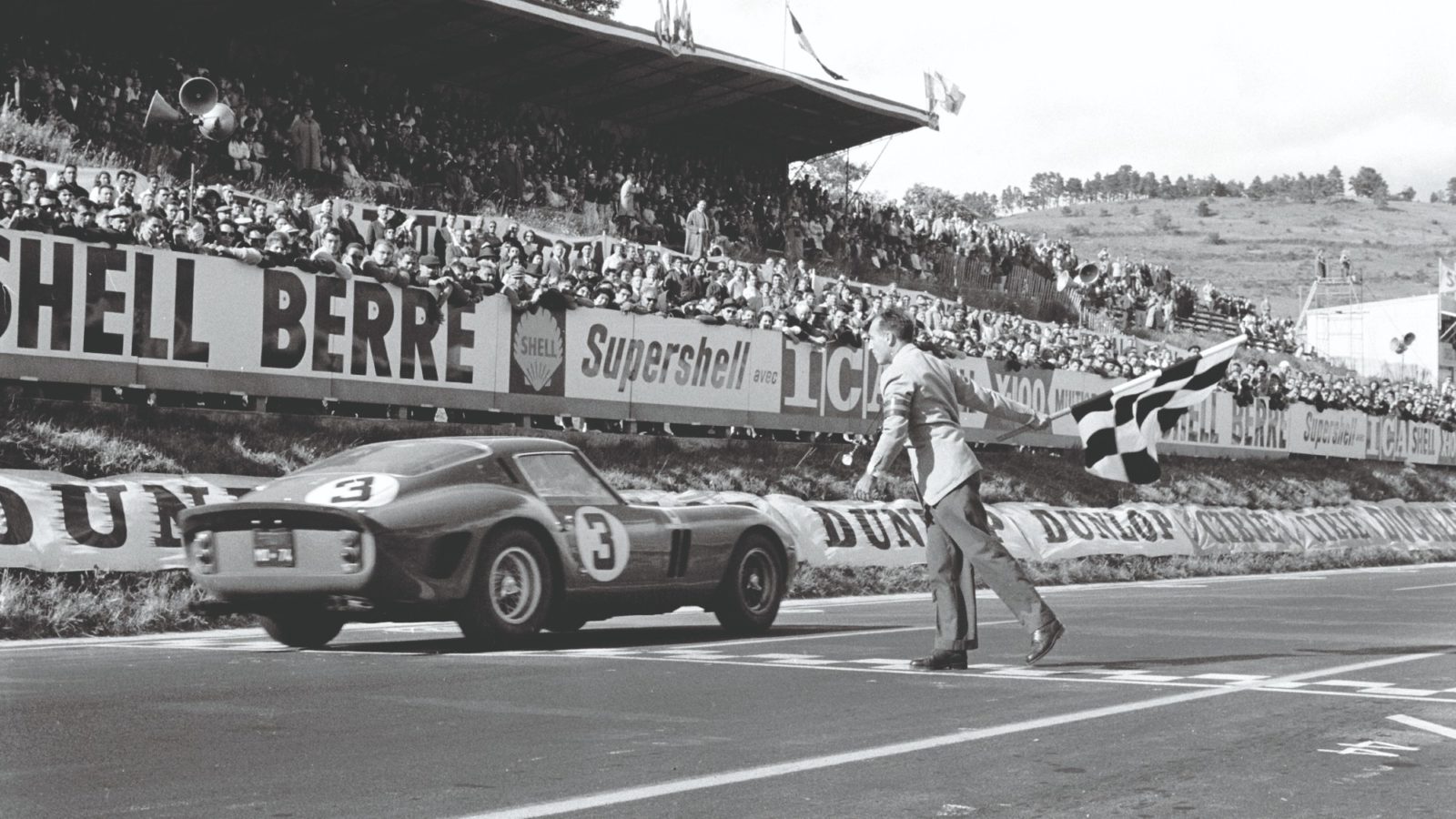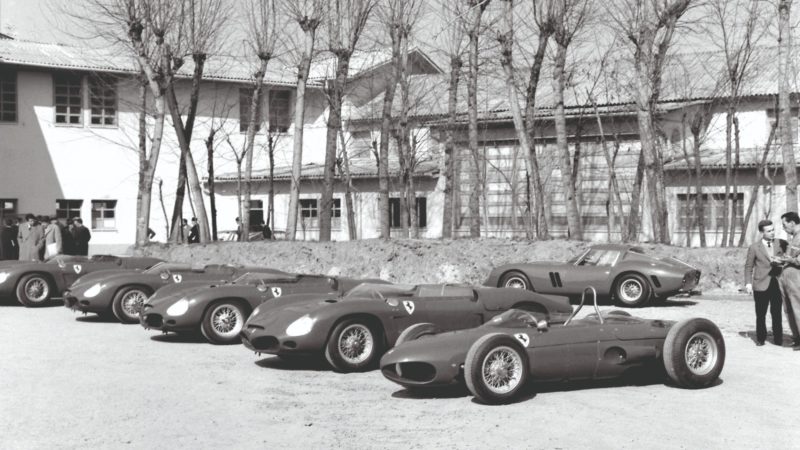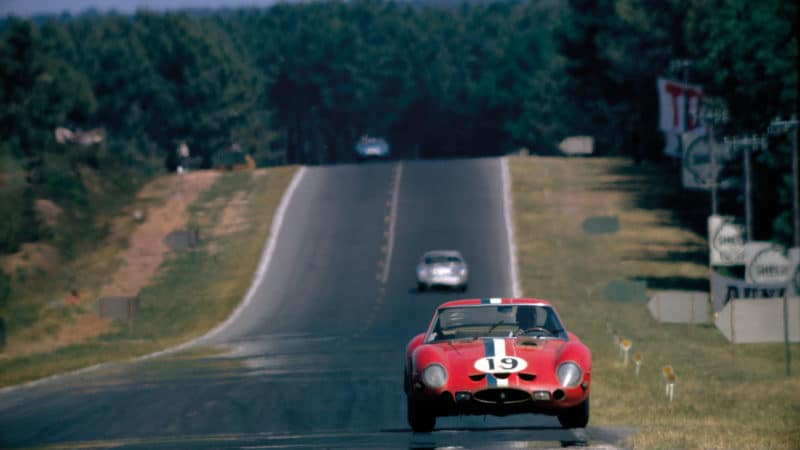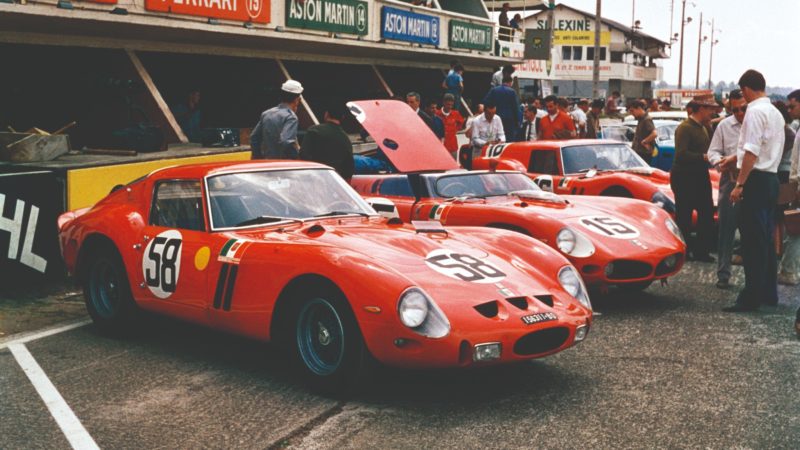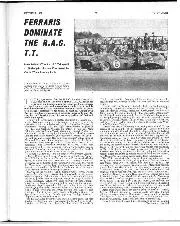In July, Carlo Maria Abate took Volpi’s GTO (3445 GT) to victory in the Trophées d’Auvergne at Charade, leaving the little Lotus 23 of Alan Rees to trail home in second, and GTOs then dominated the following month’s Tourist Trophy at Goodwood. Innes Ireland took pole position in 3505 GT, but come the race he was soon overtaken by John Surtees in 3647 GT. ‘Fearless John’ set a series of lap records as he pulled away from the other GTOs, and looked set to add a four-wheeled TT win to his earlier two-wheeled success until Jim Clark lost control of his Aston Martin DB4 GT Zagato while being lapped and took them both out of the race.
A grateful Ireland swept past to take victory, and Bob Grossman maintained the GTO’s perfect record by finishing second overall at Bridgehampton’s Double 400. The championship then came to a close at the Paris 1000Kms in which GTOs occupied four of the top six positions. Leading them all were Pedro and Ricardo Rodríguez in the NART-entered 3987 GT, a poignant result given that Ricardo died a couple of weeks later during practice for the Mexican Grand Prix.
Ferrari’s clean sweep en route to the title was impressive, but the GTO really showed its versatility away from the glare of the world championship. In the UK, Graham Hill did his best to keep on terms in the John Coombs Jaguar E-type, but the likes of Mike Parkes, John Surtees and Innes Ireland were all GTO- mounted and Parkes, in particular, ran riot.
“Sadly, the officials refused to let the car race without a bonnet”
On paper, some of these British events might seem low-key. Twenty-five laps around Mallory Park is a long way – both literally and figuratively – from the Targa Florio, but Parkes, Surtees and Hill were all at the Leicestershire circuit on June 11. And for the feature Formula 1 race that day, the front row comprised Surtees, Jack Brabham, Clark and Hill.
On the home front, privateers Edoardo Lualdi Gabardi and Ferdinando Pagliarini often went head-to-head in Italian hillclimbing. Lualdi Gabardi – who ran a successful textiles business and was a loyal customer of Ferrari – acquired 3413 GT and won first time out at the Coppa Città di Asiago. This was a different discipline to British hillclimbing, on a more epic scale – highlighted by the fact that the Mosson-Treschè Conca course covered nine miles and climbed 802 metres (2650 feet).
Lualdi Gabardi would claim nine class victories during the course of that year and win his class in the Italian GT Championship, but the GTO’s maiden season was not entirely flawless. The Tour de France – still a non- championship event in 1962 – had become a Ferrari stronghold, its gruelling schedule showcasing the all-round abilities of the 250 GT Berlinetta, variants of which had won every year since 1956. Thanks to an unfortunate sequence of events involving a moment’s inattention, a milk lorry and a missing bonnet, it would not be a GTO that continued that run.
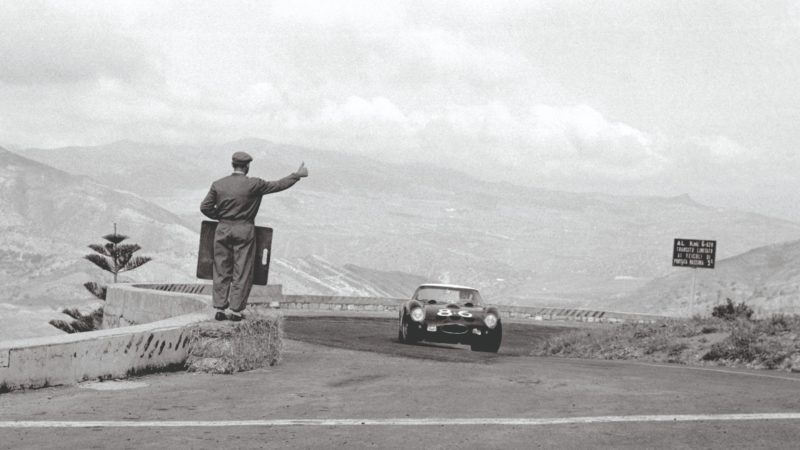
Thumbs up at the 1962 Targa Florio for the 250 GTO of Giorgio Scarlatti and Pietro Ferraro
Klemantaski Collection/Getty Images
Lucien Bianchi and Claude Dubois had a comfortable lead aboard 3527 GT as the field made its way from Spa-Francorchamps to Reims for the final race of that year’s Tour, but as they came through the village of Remouchamps, Bianchi went straight through a junction and hit a milk lorry. The damage was extensive, but Ferrari’s Assistenza Tecnica crew worked miracles to get the GTO to Reims. Sadly, it was for nothing – officials refused to let the car race without its bonnet, which had been left in Remouchamps.
The Belgians were classified seventh and victory instead went to the Short Wheelbase of André Simon and Maurice Dupeyron. Decades later, Dubois remembered that while he was driving the GTO during a pre-event recce on one of the hillclimbs, Bianchi had warned him to slowdown because it was a time of day at which the milk lorries would be on the road…
Later in 1962, the GTO chalked up yet more victories, from the Rand 9 Hours at Kyalami to the Nassau Tourist Trophy. In America, however, there was trouble brewing. Carroll Shelby’s Cobra had been homologated on August 6, and the Texan set his sights on taking down Ferrari. He managed it, too, but not until 1965 – by which point the GTO had chalked up three world championships and Enzo, as always, had long since moved on.
